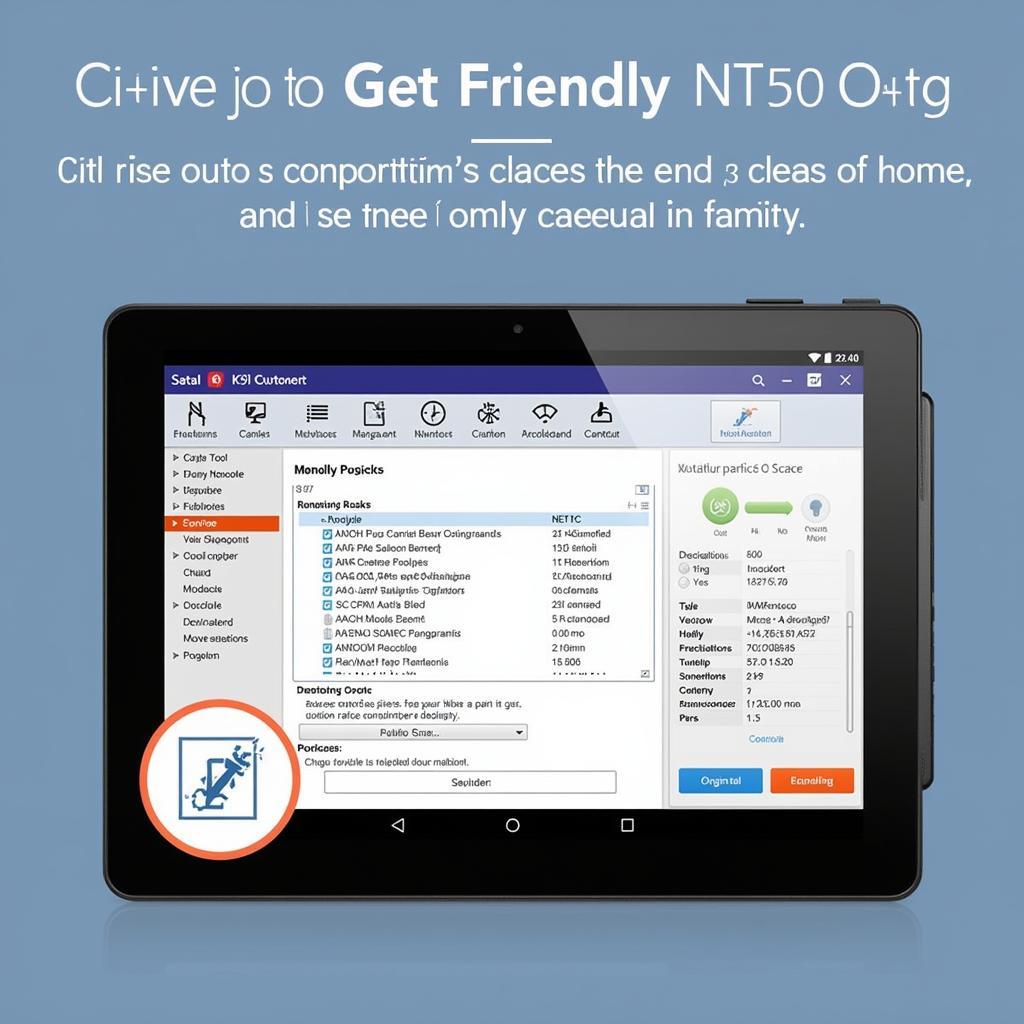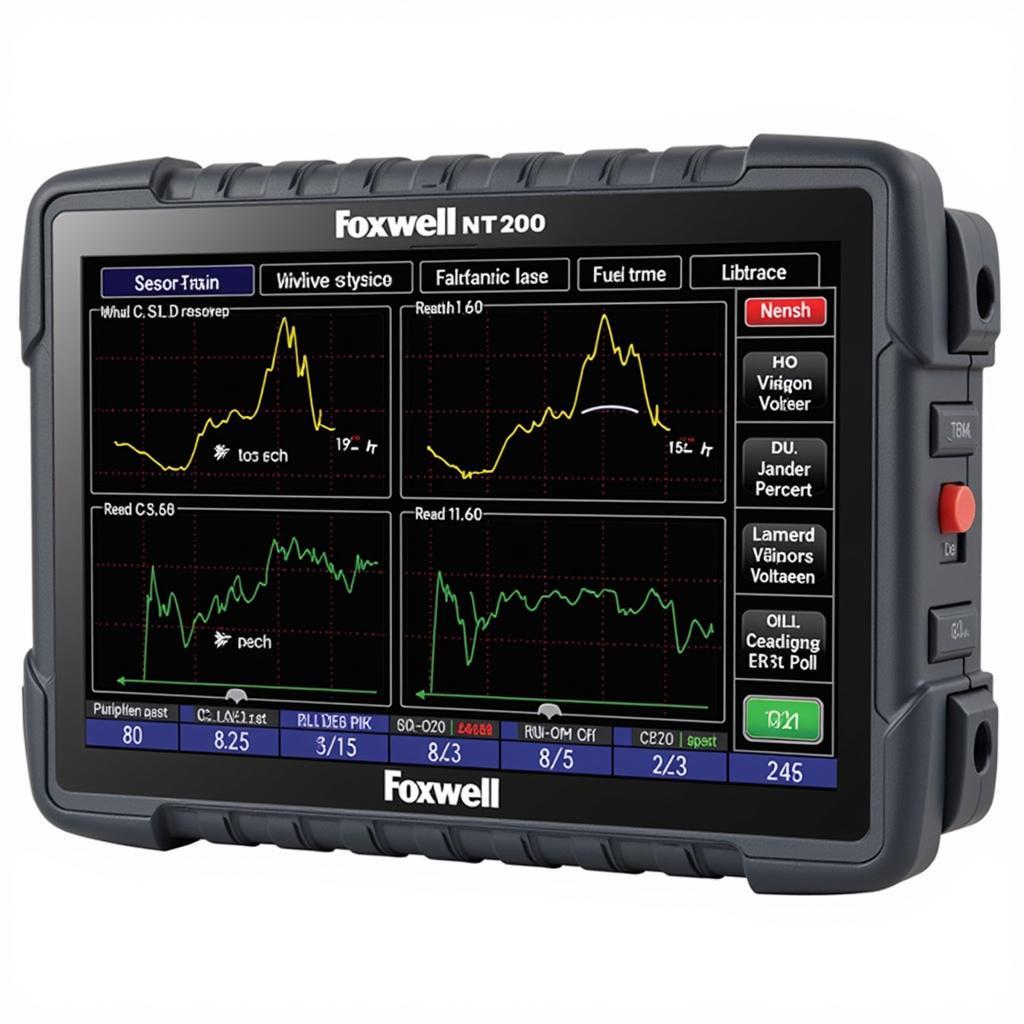The Foxwell NT201 is a powerful OBD2 scanner that provides a wealth of information about your car’s engine, including the ECT temp. But what does this reading mean, and how can you use it to troubleshoot engine problems? This comprehensive guide will delve into the intricacies of Foxwell Nt201 Ect Temp readings, equipping you with the knowledge to understand and address potential issues.
What is ECT Temp and Why is it Important?
ECT stands for Engine Coolant Temperature. As the name suggests, it refers to the temperature of the coolant circulating within your engine. Maintaining the optimal engine coolant temperature is crucial for the following reasons:
- Optimal Engine Performance: Your engine operates most efficiently within a specific temperature range.
- Fuel Efficiency: A properly warmed-up engine burns fuel more efficiently, leading to better gas mileage.
- Emissions Control: A hot engine reduces harmful emissions, minimizing your environmental impact.
The Foxwell NT201, along with other OBD2 scanners like the Foxwell NT201 auto OBD2, reads the ECT sensor data, providing you with real-time information about your engine’s temperature.
Common Issues Related to Foxwell NT201 ECT Temp Readings
While the Foxwell NT201 is reliable, you might encounter discrepancies in the ECT temp readings. These discrepancies often point to underlying issues that require attention. Let’s explore some common problems:
1. Fluctuating ECT Temp Readings
Problem: Your Foxwell NT201 displays erratic ECT temp readings, rapidly fluctuating between hot and cold, even when the engine is warmed up.
Possible Causes:
- Faulty ECT Sensor: A malfunctioning sensor can send inaccurate signals to the scanner.
- Wiring Issues: Damaged or corroded wiring connecting the sensor to the ECU can disrupt the signal.
- Air Pockets in the Cooling System: Air pockets can interfere with coolant flow, leading to inconsistent temperature readings.
Troubleshooting Tips:
- Check the ECT Sensor: Inspect the sensor for any physical damage or corrosion.
- Inspect Wiring and Connectors: Examine the wiring harness for loose connections, breaks, or damage.
- Bleed the Cooling System: Remove any trapped air in the cooling system.
2. Low ECT Temp Reading
Problem: Your Foxwell NT201 consistently shows a lower than normal ECT temp, even after driving for a while.
Possible Causes:
- Stuck Open Thermostat: A thermostat stuck in the open position allows coolant to constantly flow through the radiator, preventing the engine from reaching optimal temperature.
Troubleshooting Tips:
- Test the Thermostat: Remove the thermostat and inspect it for proper operation.
- Replace a Faulty Thermostat: If the thermostat is faulty, replace it with a new one.
3. High ECT Temp Reading
Problem: Your Foxwell NT201 displays an abnormally high ECT temp reading, indicating potential overheating.
Possible Causes:
- Low Coolant Level: Insufficient coolant in the system can cause overheating.
- Cooling Fan Malfunction: A malfunctioning cooling fan won’t cool the radiator effectively.
- Clogged Radiator: A clogged radiator restricts coolant flow, leading to overheating.
Troubleshooting Tips:
- Check the Coolant Level: Ensure the coolant level is within the recommended range.
- Inspect the Cooling Fan: Verify if the cooling fan is engaging when the engine reaches operating temperature.
- Check for Radiator Clogs: Look for any debris or blockages in the radiator.
Using Foxwell NT201 to Diagnose ECT Temp Issues
The Foxwell NT201 is a valuable tool for diagnosing ECT temp related problems. It offers features that can aid in pinpoint the root cause:
- Live Data Stream: View real-time ECT temp readings as the engine runs, allowing you to observe fluctuations or abnormal patterns.
- Freeze Frame Data: Access a snapshot of the engine’s parameters at the time a fault code was stored. This data may include the ECT temp reading when the issue occurred.
- Component Activation: Depending on the vehicle model, you might be able to use the NT201 to activate components like the cooling fan, helping you test their functionality.
Remember, while the Foxwell NT201 can help identify potential issues, it’s crucial to interpret the data within the context of other symptoms and your vehicle’s specific make and model.
Foxwell NT201: A Versatile Tool for Mechanics and Car Owners
The Foxwell NT201 is a versatile tool suitable for both professional mechanics and car owners. Its user-friendly interface, coupled with its comprehensive diagnostic capabilities, makes it an invaluable asset for:
- DIY Enthusiasts: Take control of your car’s maintenance by diagnosing and addressing basic issues yourself.
- Small Workshops: Provide efficient and cost-effective diagnostic services to your customers.
- Mobile Mechanics: Carry a powerful diagnostic tool wherever you go, enabling you to troubleshoot problems accurately in the field.
“The Foxwell NT201 has been a game-changer for my workshop,” says John Smith, a certified mechanic and owner of Smith’s Auto Repair. “Its ability to provide in-depth diagnostics on a wide range of vehicles has significantly improved our efficiency and accuracy.”
Conclusion
Understanding your Foxwell NT201 ECT temp readings can be crucial in identifying and addressing potential engine issues. By familiarizing yourself with the information presented in this guide, you can proactively maintain your vehicle’s health and avoid costly repairs.
For further assistance with your Foxwell NT201 or to explore other diagnostic solutions, don’t hesitate to contact ScanToolUS at +1 (641) 206-8880 or visit our office located at 1615 S Laramie Ave, Cicero, IL 60804, USA. We are here to help you keep your vehicle running smoothly.


